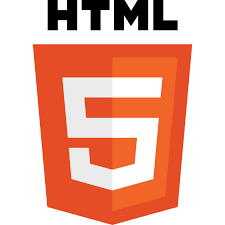Email validation is a critical aspect of web development, ensuring that user input conforms to the expected email format. In this comprehensive guide, we will explore HTML email validation, covering the intricacies of input type email validation, best practices, and common issues. Whether you're a beginner or an experienced developer, you'll find valuable insights and practical tips to enhance your email validation skills.
The Significance of HTML Email Validation
HTML email validation is essential for various reasons:
Data Quality: Accurate email validation ensures that the data collected from users is valid and reliable.
User Experience: Proper validation enhances the user experience by preventing incorrect email submissions.
Security: Valid email addresses are crucial for user authentication and communication, minimizing security risks.
HTML Input Type Email Validation
HTML5 introduced the input element with the type attribute set to email for email validation. This built-in feature leverages regular expressions to check email formats, ensuring that user input is in the correct form.
Here's an example of how to use it:
<input type="email" id="userEmail" name="userEmail" required>
Key attributes:
type="email": Specifies the input type as email.idandname: Provide identification for the input element.required: Makes the field mandatory.
Common HTML Email Validation Issues
Despite the convenience of HTML input type email validation, some common issues can arise:
Overly Restrictive Validation: Some email patterns that are valid might be rejected by strict validation.
Incomplete Validation: While HTML validation checks for basic format, it doesn't verify the existence of the email address.
JavaScript Validation: Developers often complement HTML validation with JavaScript for more robust validation.
Best Practices for HTML Email Validation
To ensure effective HTML email validation, consider these best practices:
Use Input Type Email: Leverage the built-in type="email" for basic format validation.
Combine with JavaScript: Enhance validation by using JavaScript to check the existence of email domains and improve user experience.
Provide Clear Feedback: Offer informative error messages to guide users when their input is invalid.
Regularly Update Patterns: Keep email validation patterns up-to-date to accommodate evolving email formats.
Implementing JavaScript Email Validation
JavaScript can complement HTML validation to create a more comprehensive email validation process. Here's a simple example using JavaScript:
function validateEmail(email) {
const regex = /^[^\s@]+@[^\s@]+\.[^\s@]+$/;
return regex.test(email);
}
This JavaScript function checks if the input email adheres to a basic email pattern.
Frequently Asked Questions (FAQs)
Let's address some frequently asked questions about HTML email validation:
Q1: Is HTML email validation sufficient for secure form submissions?
HTML email validation is a good starting point, but it's recommended to combine it with JavaScript for more robust security.
Q2: Can HTML validation prevent all incorrect email submissions?
While HTML validation checks for basic format, it doesn't guarantee the existence of the email address. JavaScript can be used for more comprehensive validation.
Q3: What is the recommended regex pattern for JavaScript email validation?
A common regex pattern for basic email validation is /^[^\s@]+@[^\s@]+\.[^\s@]+$/, which checks for a valid email format.
Q4: How can I provide user-friendly error messages for invalid email submissions?
Customize error messages using JavaScript to inform users about the specific issue with their input.
Q5: Should I update my email validation patterns regularly?
Yes, keeping email validation patterns up-to-date is essential to accommodate new email formats and prevent false negatives.
In conclusion, HTML email validation is a fundamental skill for web developers. By understanding its significance, mastering input type email validation, and implementing best practices, you can ensure that your web forms collect accurate and valid email addresses. Remember to complement HTML validation with JavaScript for a more comprehensive approach to email validation, and keep your patterns up-to-date to adapt to evolving email formats. Unlock the full potential of email validation in your web development journey today!
```



